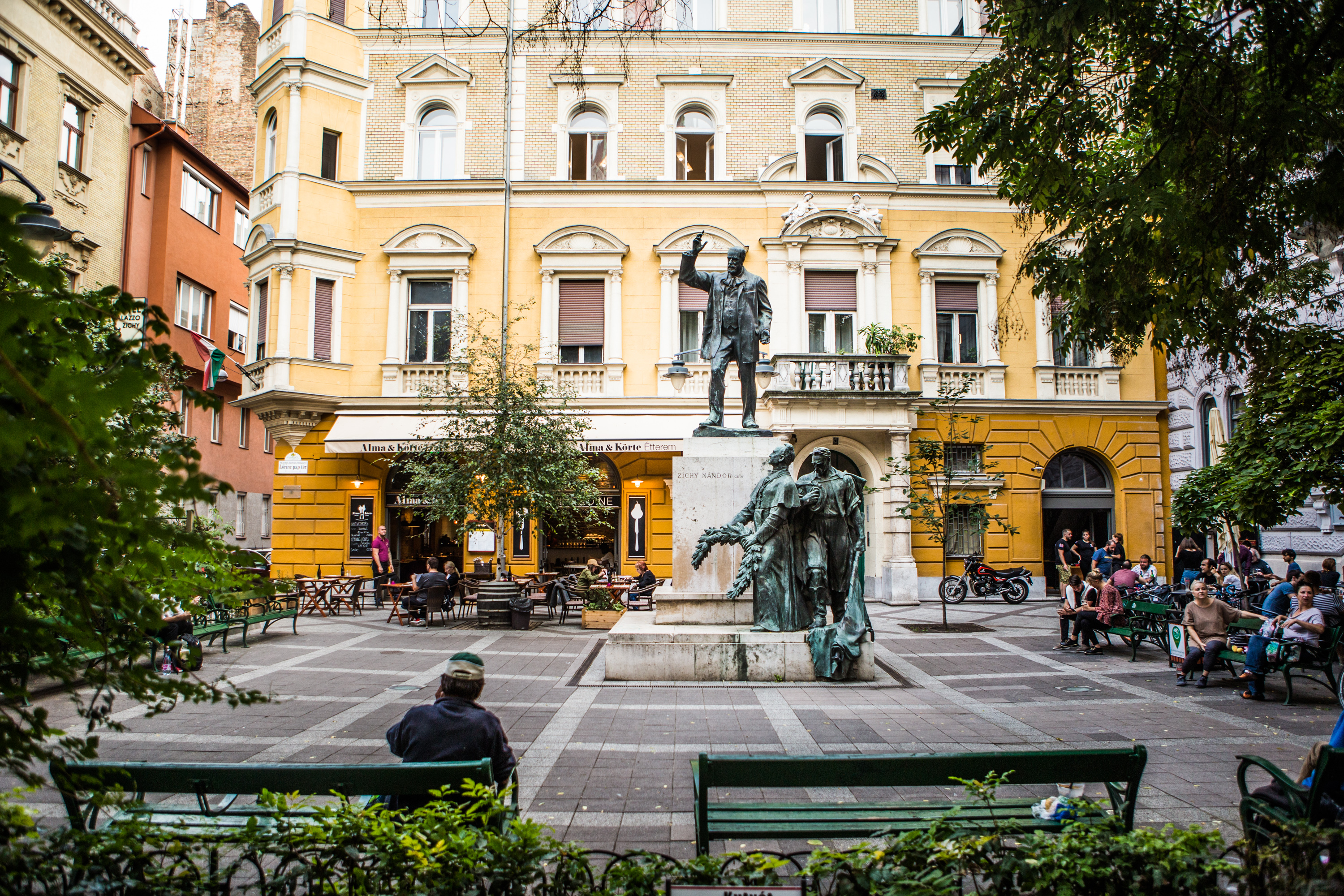Until 1900, the
square had no name, as it was considered merely as the junction with Mária utca
and today’s Gyula Krúdy utca, originally
József utca, like the surrounding district, Józsefváros. Before it was given Krúdy’s
name in 1947, the street was known after a Jesuit monk-theologian, Béla Bangha.
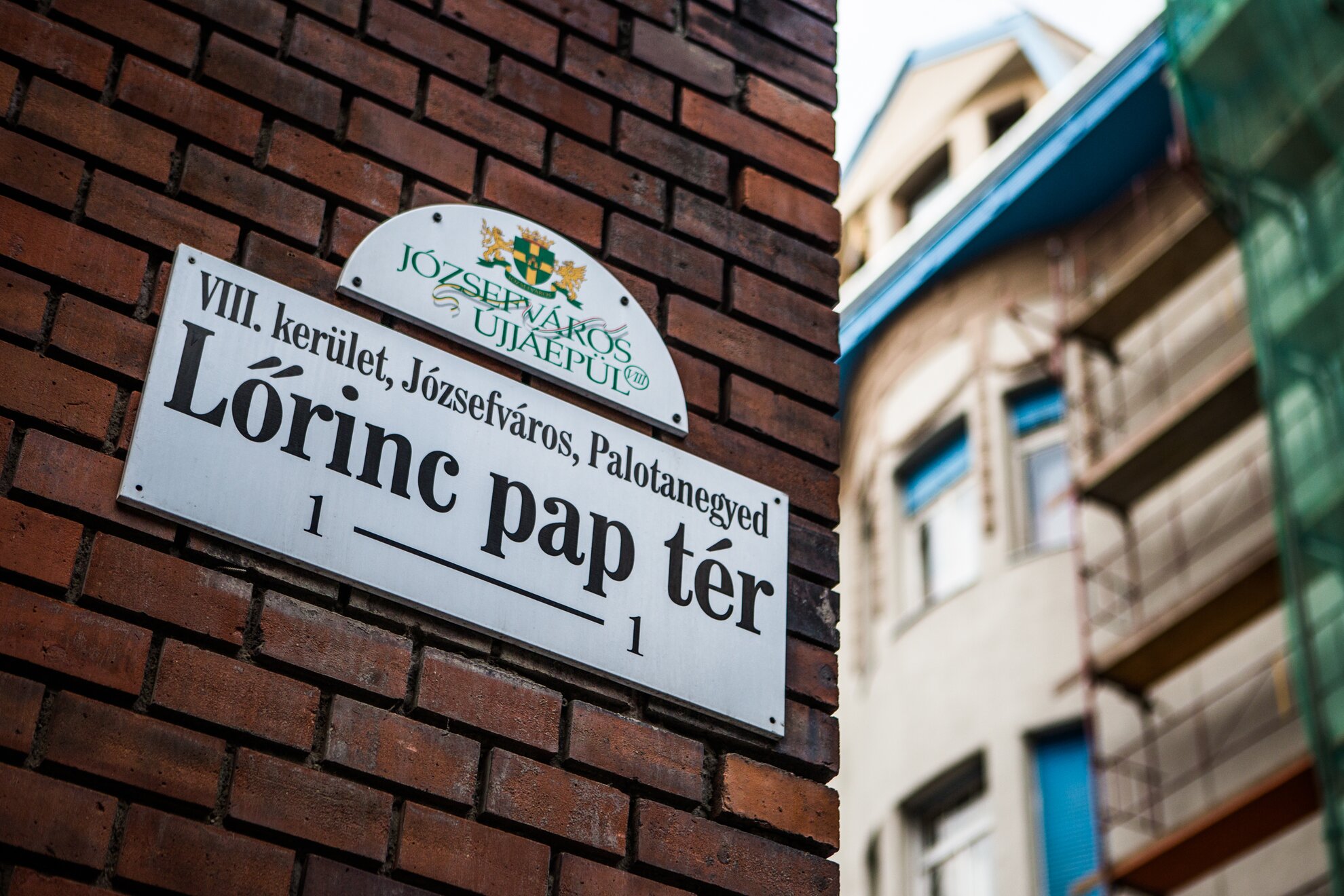
Facing it are the Darányi Palace aka the Asztalnokház, and the Neo-Renaissance Ráthonyi Reusz Palace, built in 1898-99 to celebrate the family’s recently awarded nobility. The Darányi fell into the hands of the eponymous family in 1928, passed to them from the Liebners of equally good standing.
The plot had been acquired by József Liebner
senior, his wife overseeing the construction of the building in 1893. This is
the one you can still see at the square today. Its nickname, Asztalnokház, is associated with
their son, József Liebner junior, granted noble status in 1896.
He then became the
master of the stewards, asztalnok in Hungarian. His monogram still decorates
the house above the gate. The infamous pub of the day was located in the bottom
of the building, opposite the church.
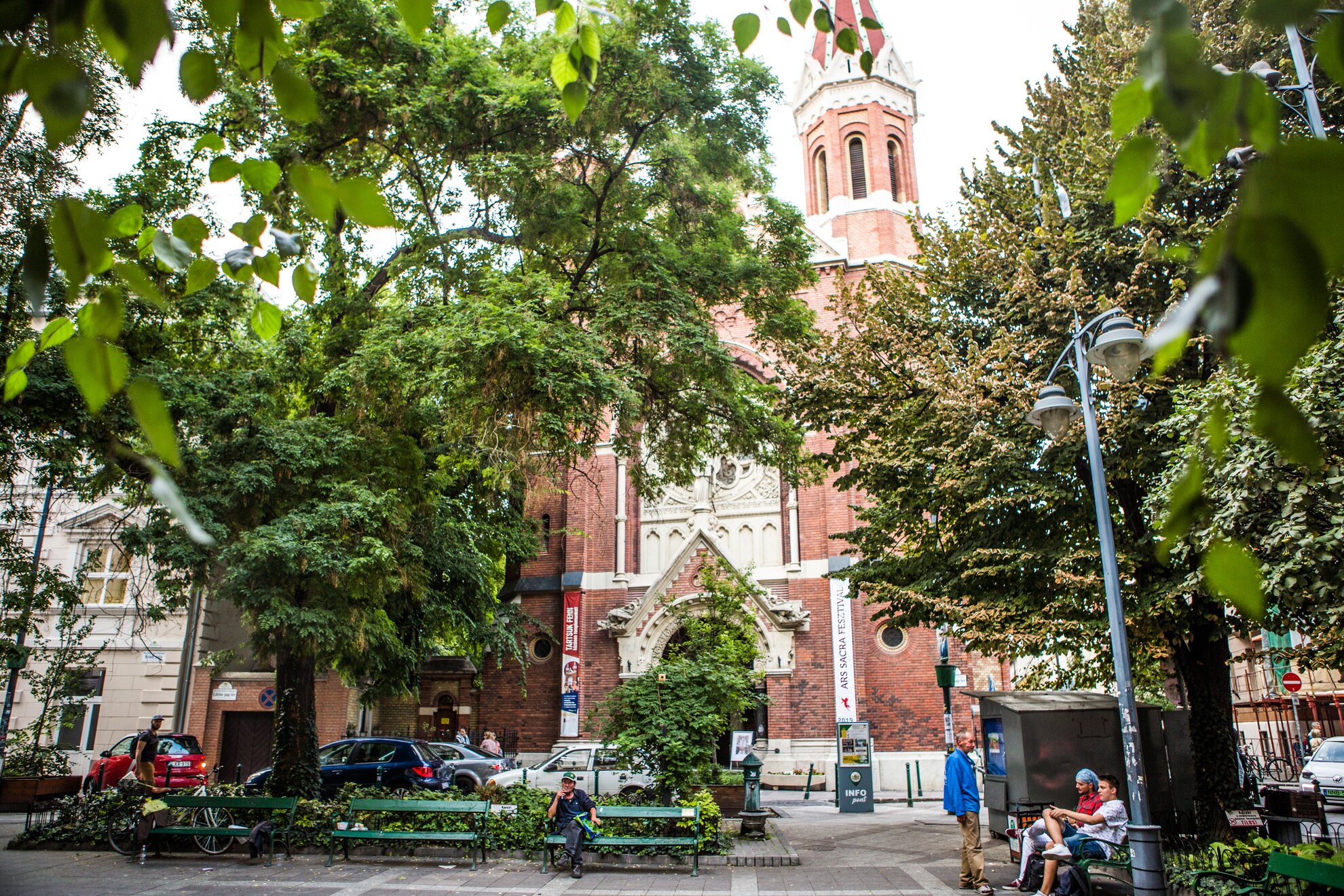
There’s another impressive building on the Mária utca side, the Zichy Palace, which currently functions as a hotel. It was built in an eclectic style by Nándor Zichy in 1899, as a display of the count’s wealth. Yet he, and to a greater extent, his wife, were well-intentioned, charitable people, who supported the neighbouring Jesuit church.
The Jézus Szíve-templom is one of Hungary’s rare sacral buildings constructed on the initiative of the congregation, and with public founding – much donated the Zichy family. Nándor was honoured with a statue in the heart of the square, opposite the church. This was removed and taken out of Budapest for political reasons in 1947, but has been back at its original location since 1993.
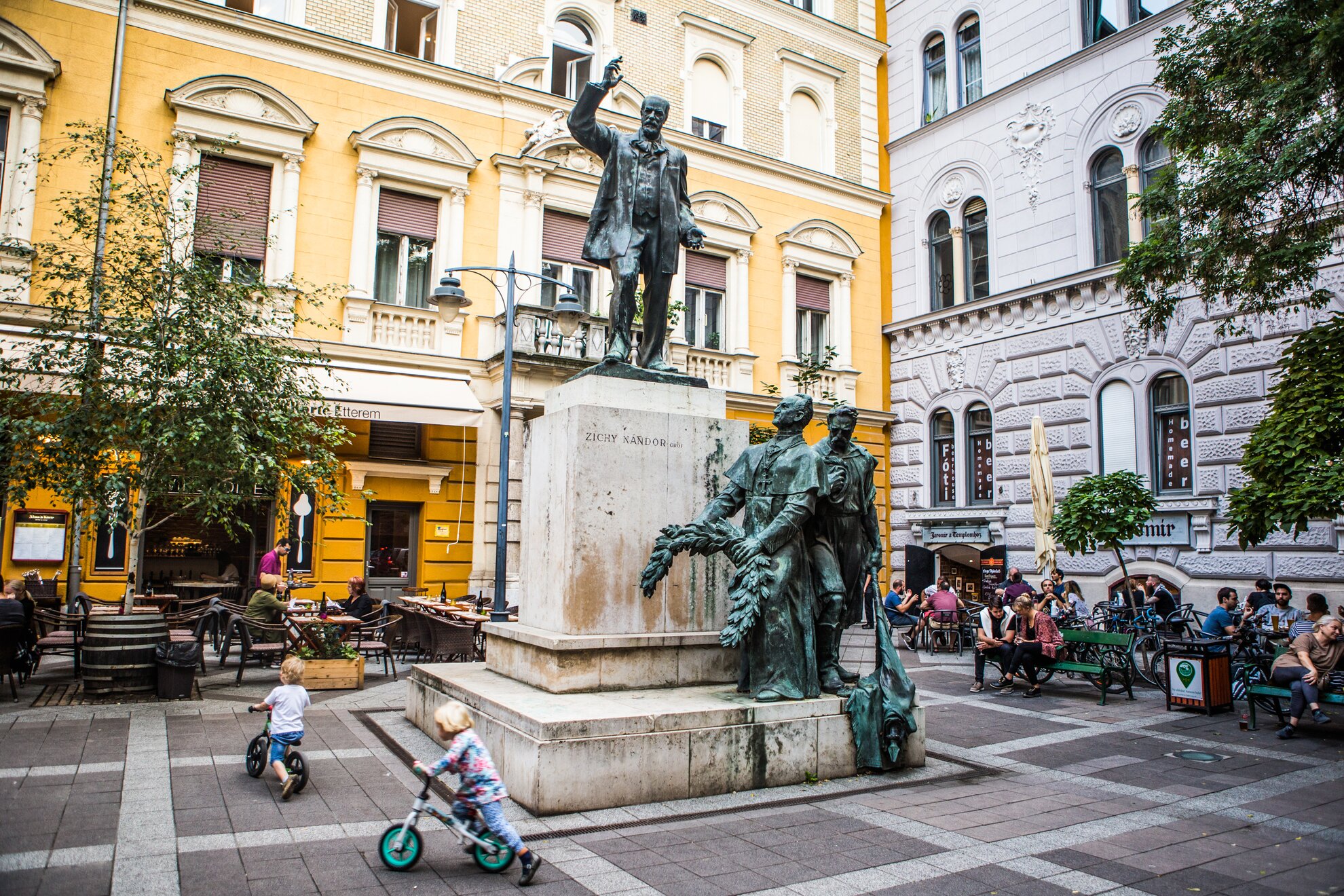
Turning back to the name of the square, this became
an issue when various palaces started popping up in the area, and it was named
after Cardinal János Scitovszky, the archbishop of Esztergom. After World War
II, the Communists weren’t too enamoured with this, and found a new one in
1951.
Perhaps in an effort to compromise, they chose a religious person as well, but someone whose story had long been forgotten. Lőrinc Mészáros was one of the leaders of the peasant uprising led by György Dózsa 500 years ago. After its defeat, the priest (pap) Lőrinc was captured and burned at the stake, making him a martyr who died defending the poor against the rich.
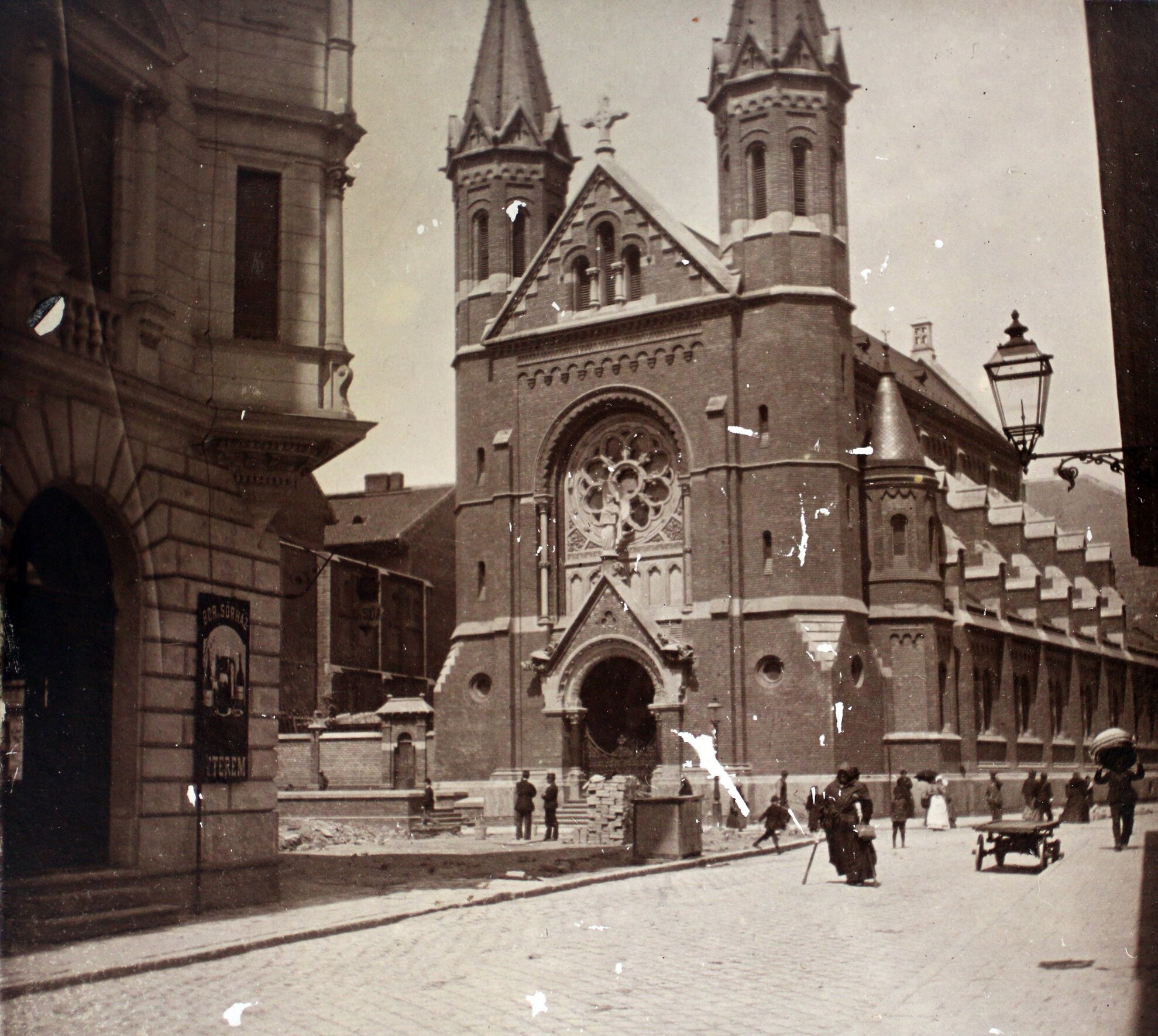
The area had two sides to it in the first half of the 1800s. On one hand, nice, shaded, well-kept gardens were looked after by middle-class residents, such as the cartographer Ferenc Karacs, who used to host some of the greatest cultural figures of the day – József Katona allegedly wrote his famous play, Bánk bán, under one of the trees here.
But much of the area was occupied by shabby, dirty
houses that stood along unpaved, unlit streets, best to be avoided on an
evening stroll. Unsurprisingly, city guards were regulars in the area, as a
notorious underworld pub, Két Pisztoly, the Two Pistols, was also to be found
here.
It was a perfect spot for those looking for trouble, as hiding places were
plentiful: there was a swampy lake where today’s Horánszky utca now runs, while
Mária utca used to be a long and deep canal.
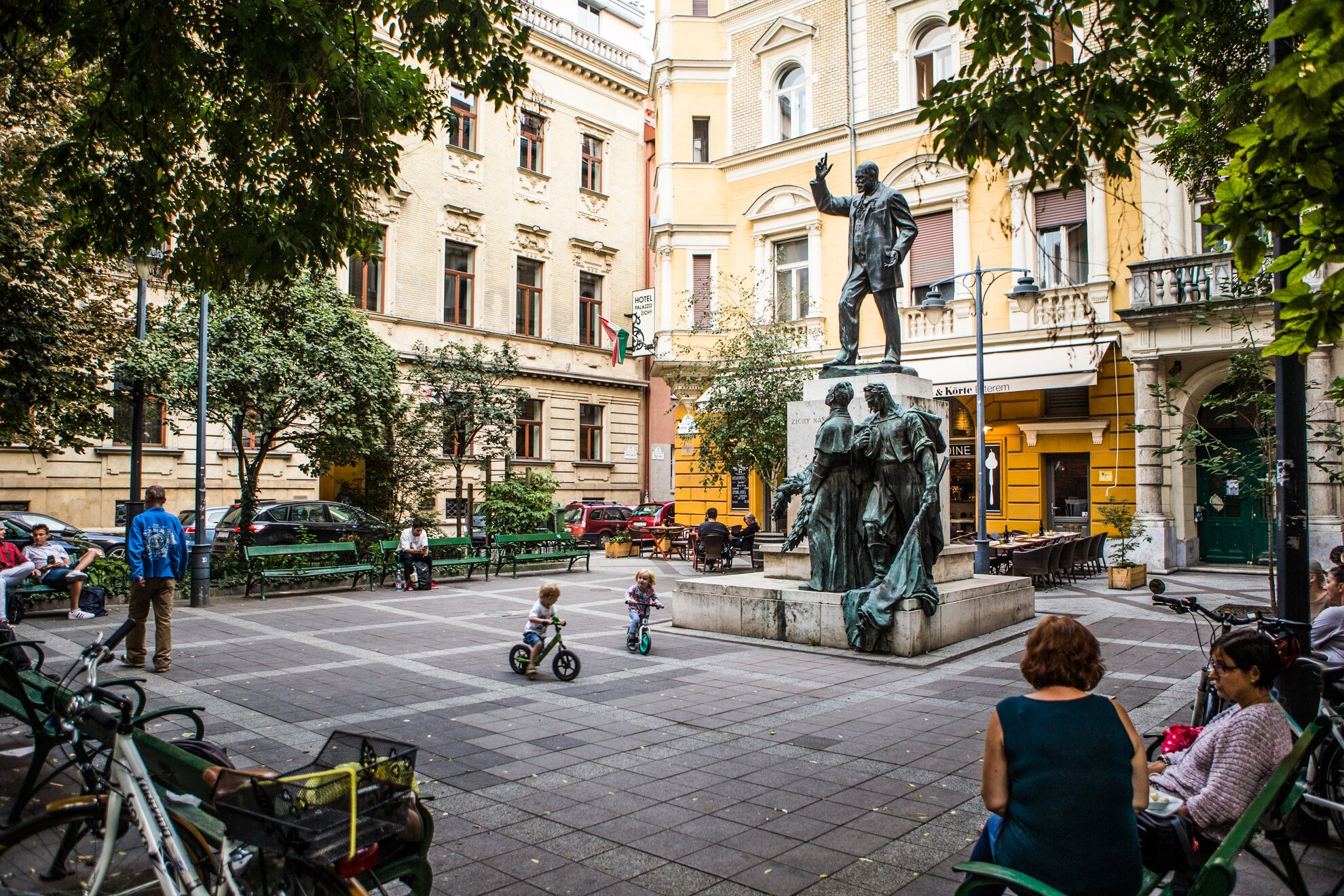
Later, the great flood of 1838 completely changed
the district, but the bohemian lifestyle, the prostitution and the often
dangerous pubs remained in the area, despite the fancy mansions.
This peculiar atmosphere was at its peak in the
early 1900s. The sober, virtuous citizens at the church contrasted with the
wild drinking and nefarious activities at the Asztalnokház next door.
The priests repeatedly complained about the situation to the landlord, Liebner, but as he received a generous rent from the bar owner, he ignored the issue. Bohemians and churchgoers learned to live in peace with each other.
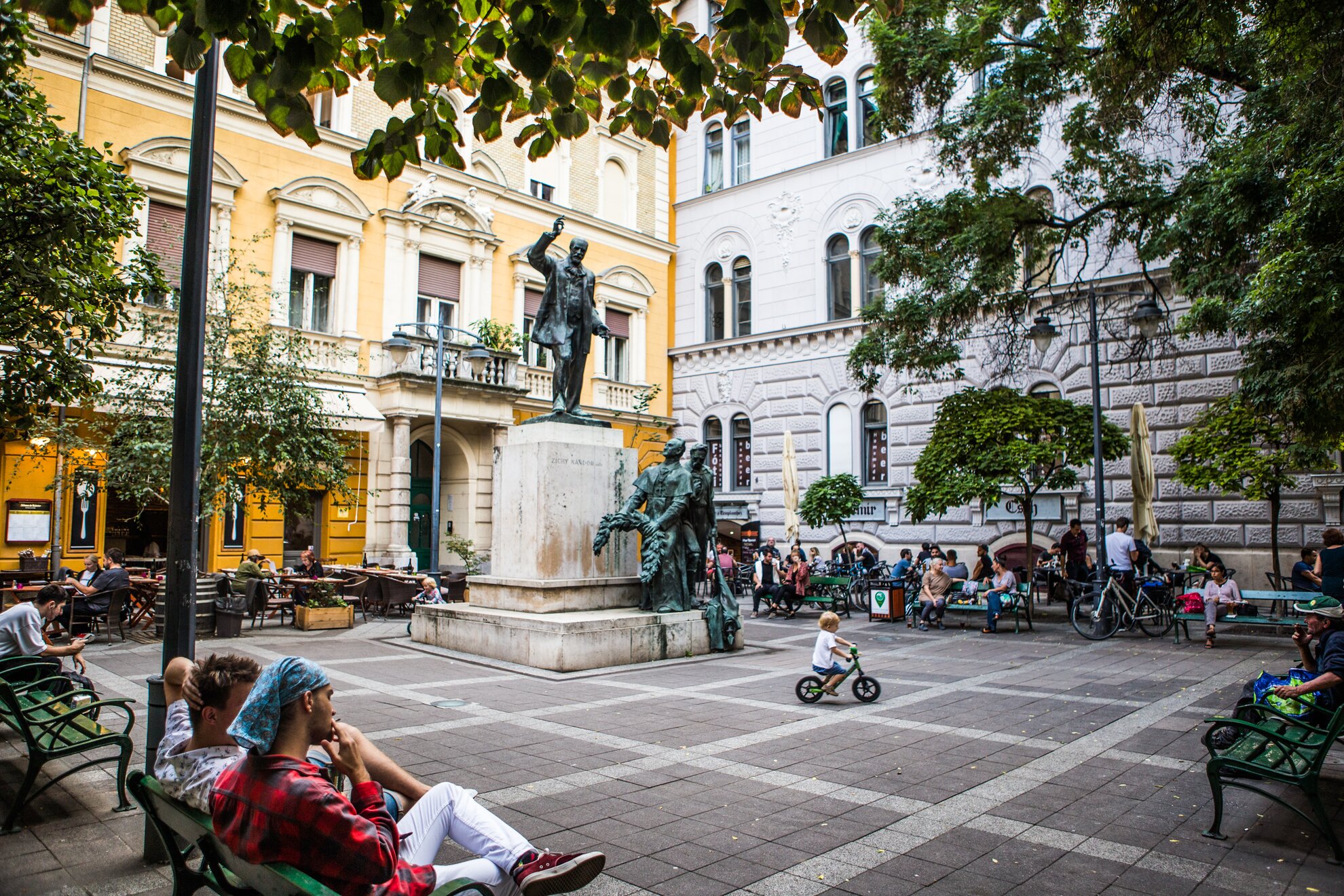
The area went through considerable change later, and quietening down until the late 1980s. Then for the last time, it became the centre of an alternative artistic and music scene, most notably with the legendary live venue the Tilos az Á. On the square itself, the Egocentrum was open day and night, closing down in 1993 and being replaced by the Cirko-Gejzír underground cinema.
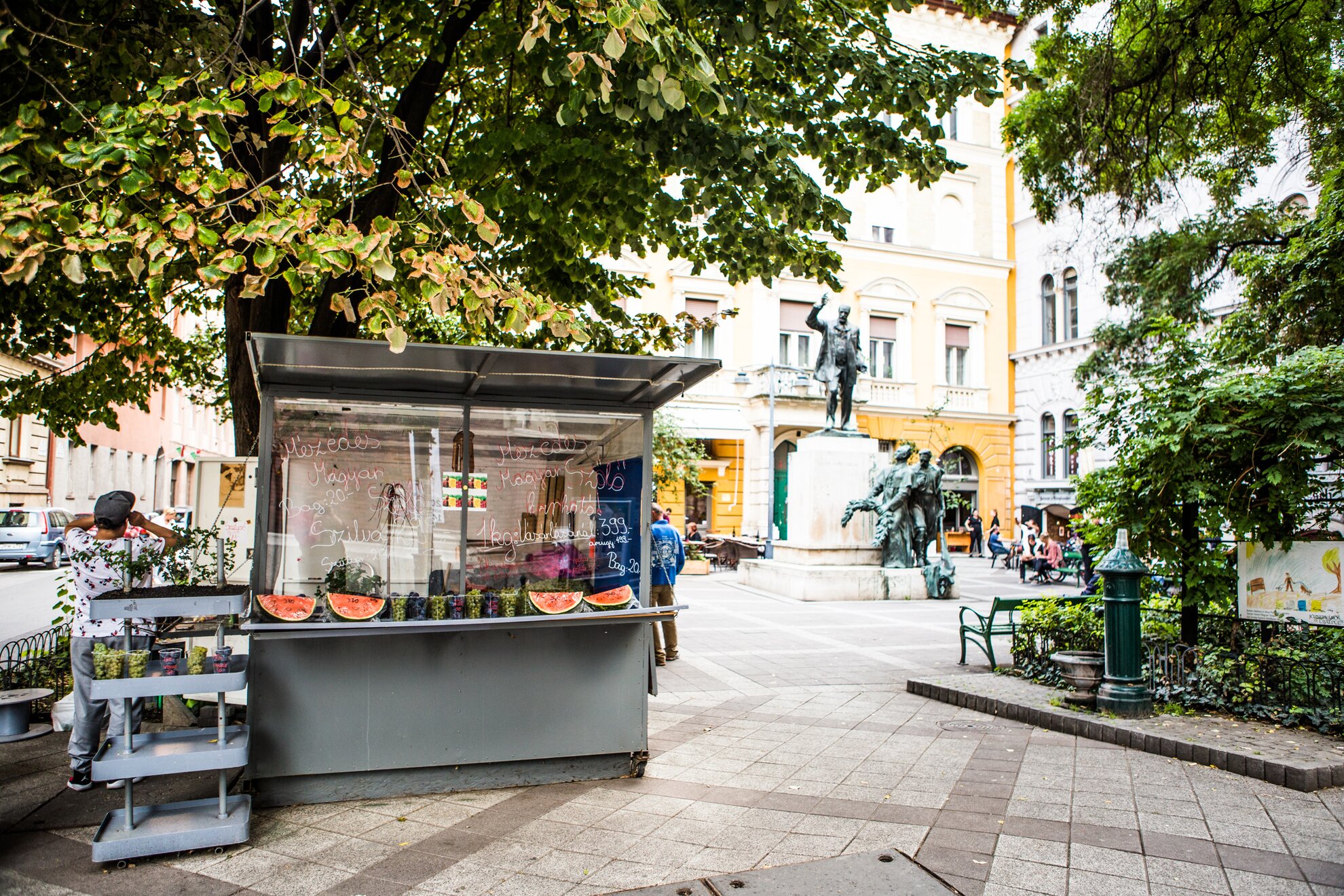
Currently, you’ll find a Czech pub called Jaromír a Templomhoz at this spot – but the bohemians and alternative types have gone elsewhere. The area has been gentrified these days, relaxed and decent, with cafés and cosy, safe pubs.
